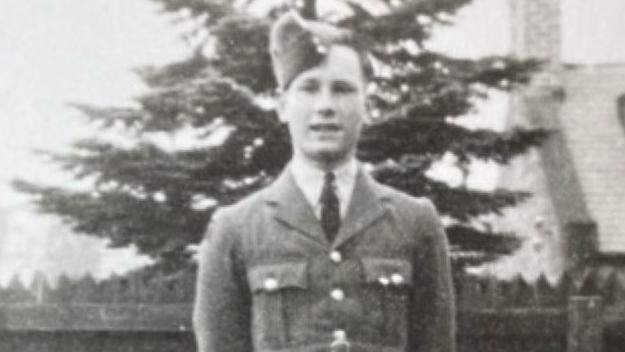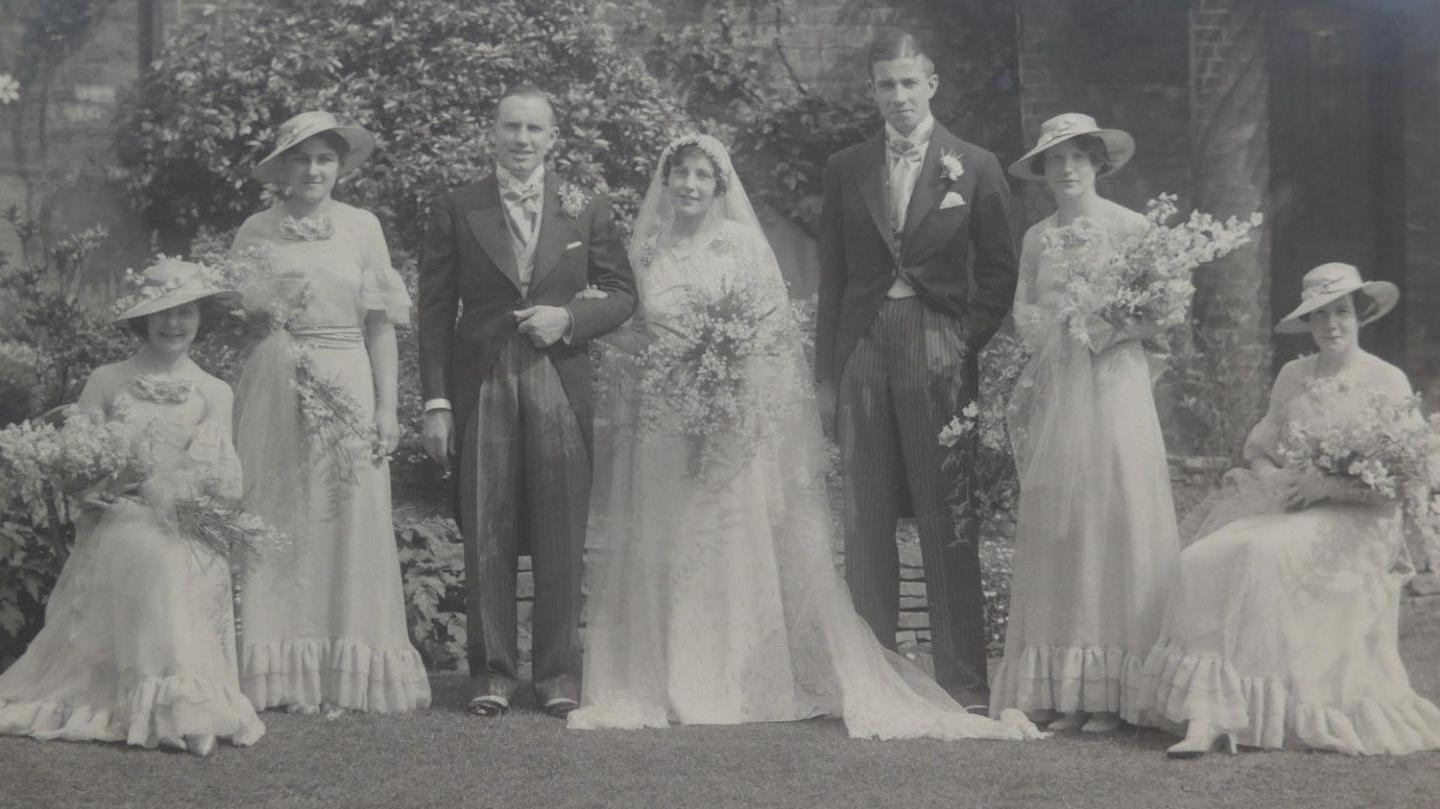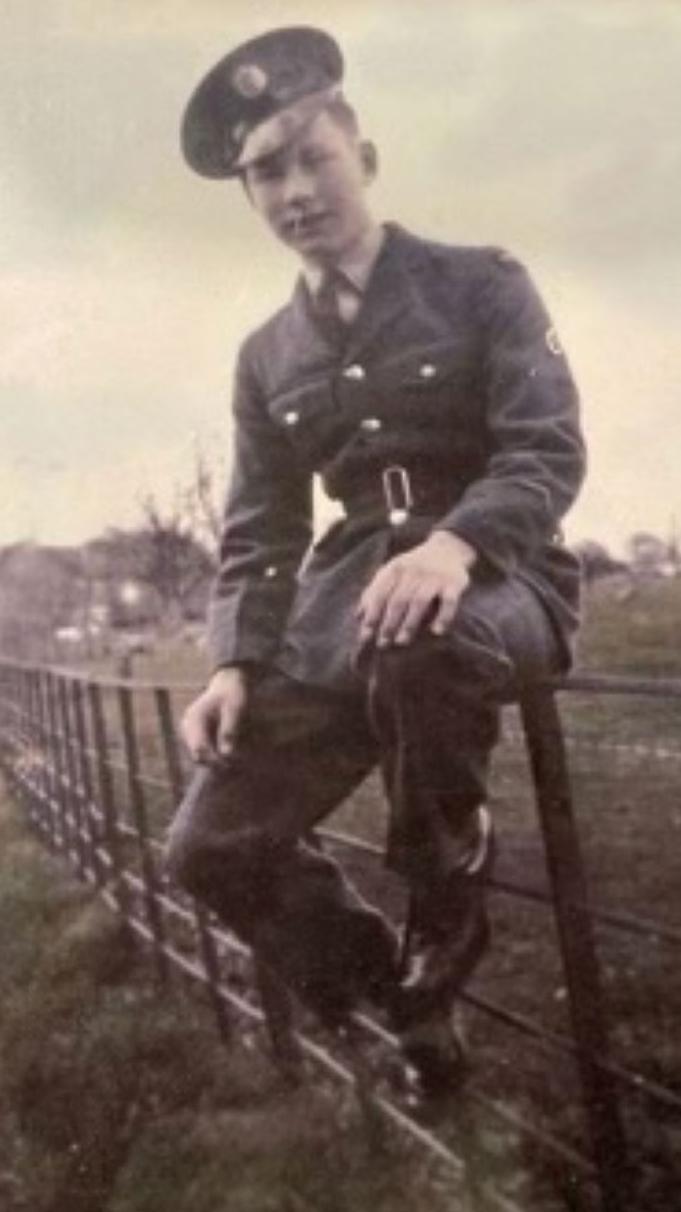Who were the men of Operation Freshman?

Kirriemuir-born Jim Falconer was one of the operation's 48 men
- Published
They were 48 men from different backgrounds brought together for a secret war against a Nazi weapons programme.
Among those making the dangerous flight from RAF Skitten in Caithness across the North Sea to Norway was a construction boss and a joiner.
Alistair Jack, of Caithness Voluntary Group, which was involved in setting up the new Caithness at War trail, said there was a common thread running through them all.
"They were very, very brave," he says.
Alisatair adds: "Skitten is probably not a lot different today from what it was then - barren and wind-swept. Certainly a desolate and isolated place."
Some military buildings and parts of the runway survive.
Alistair accompanied Freshman families on a visit of the site last year.
He says: "Some of the relatives bent down and touched the runway - the last place their uncle had stood alive. It was very poignant."
The 'suicide mission' to foil Hitler's atomic bomb
- Published13 May 2024
The apprentice joiner

Robert Norman was an apprentice joiner before World War Two
Sapper Robert Norman's mother died in 1944 never knowing her son's fate.
All she was told was he was missing in action.
Norman, from Brechin, was an apprentice joiner before the war and would cycle to Montrose six days a week for his job.
When he volunteered for the operation he was with Royal Engineers, 9 (Airborne) Field Company.
His family says a fictitious endurance competition between British and US engineers dubbed The Washington Cup was created as cover for the special training he and the others needed for Freshman.
Norman was on glider A and his family believe he died of his injuries when the aircraft crashed at Fylgjesdalen. He was 22.
Over the years, his relatives have visited his Commonwealth War grave in Stavanger's Eiganes Cemetery, and also the mountain where his glider came down.
His family says the renewed interest in remembering Freshman's servicemen was heart-warming, and provided new information on the operation.
Freshman flyer's fate uncovered by best man

Tom Thomas and his wife Joan with best man Tony Agutter in Blackheath in June 1935
Arthur "Tom" Thomas, 32, was navigator on Halifax B, which crashed near Helleland in Norway.
With his wife Joan, Flt Lt Thomas had a young family and he ran a large building firm in Woolwich before enlisting in the RAF Volunteer Reserve and then joining the RAF in 1940.
His family had to wait until early May 1945 to discover his fate.
By chance that month, Flt Lt Thomas' best friend and best man at his wedding, Lt Tony Agutter, had arrived in Stavanger on the Royal Navy ship HMS Wolsey shortly after VE Day.
In a Stavanger pub, Agutter asked locals if they knew of any British aircraft crashes in the surrounding area.
Told of the one near Helleland, he took a taxi to the area and met farmers who had gone to the crash site in 1942.

Flt Lt Thomas is buried in a cemetery in Norway
The farmers still had some of Flt Lt Thomas' belongings including his flight jacket and his wallet. In the wallet was a photograph of Flt Lt Thomas’ wife taken on a skiing holiday in the 1930s.
Agutter was able to get a message from his ship to the Thomas' family home in Whitchurch, Herefordshire.
Flt Lt Thomas' son Robin, who just two years old when his father died, says: "Tony was able to tell my mother he was dead.
"It was better to find out that way than in a bland note from the War Office."
Flt Lt Thomas' body was initially thrown into a pit on the mountain where his Halifax crashed, by order of the Germans.
After WW2 he was re-buried in one of seven war graves at Helleland Church, Norway. His wife's ashes were buried nearby after she died in March 1993.
Uncle who was never forgotten

Jim Falconer was a flight sergeant on one of the Halifax bombers
Sgt Jim Falconer was born in Kirriemuir and raised in Edzell, and was the oldest of five brothers.
The 20 year-old was a flight engineer on Halifax B and died on impact when the aircraft crashed.
His nephew Philip Falconer says: "My dad made sure he was remembered and talked about him regularly.
"All the brothers were in the forces which must have caused great heartache for their mum."
Philip has visited Skitten and Norway.
"I am delighted with all the current efforts to make sure their bravery is remembered," he says.
Related topics
- Published13 May 2024
